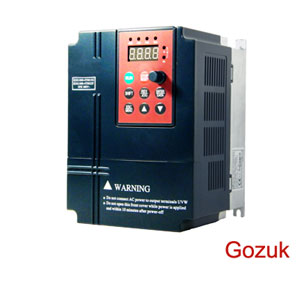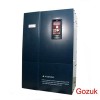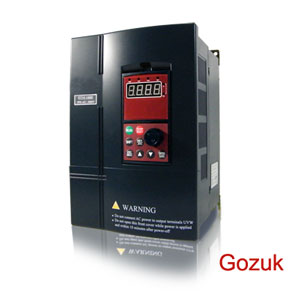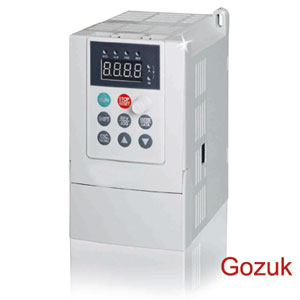The most obvious way to communicate from a PLC to a VFD is with discrete wiring. Every PLC and every VFD on the market has this capability. However, there are limitations of discrete wiring. Want to reverse? Another wire. Want fault feedback? Another wire. Speed selection? More wires. Or an analog signal. Want to change other parameters on the fly? Tough. So discrete always works, but it lacks flexibility and requires a bunch of wires running back and forth.
Profibus is an excellent example of how to eliminate all those wires and gain some flexibility. Most VFDs have a Profibus option, and most PLCs have a Profibus option. But Profibus is not the only game in town. There's DeviceNet, CANopen, etc. Then there's the newer Ethernet-based protocols, like EtherNet/IP, ProfiNet, Modbus/TCP, etc. Things get a little trickier with Ethernet. Not every VFD will have every Ethernet flavor, nor will every PLC. You have to be a little more careful
On top of all of this, a network of any type will add cost. If all you need to do is run forward, a discrete wire is a much cheaper solution than adding Profibus or Ethernet to the VFD.
As I've stated in the past, technical issues are not really the deciding factor in which network to use. If your PLC is already chosen the network becomes pretty obvious. Here in the USA, Allen-Bradley is the 800 pound gorilla, and DeviceNet and EtherNet/IP are the obvious choices. In most of the rest of the world, it's Siemens with Profibus or ProfiNet.
For my company, I've chosen EtherNet/IP as the communications standard for VFDs. (Before that was viable we used Profibus and sometimes ControlNet.) We picked it because we wanted an Ethernet-based network and we use Allen-Bradley PLCs. No brainer. I recommend a similar decision process. Pick you PLC vendor first. Then your VFD vendor. Then decide what communications to use. If it's a really simple application, use discrete wiring. If you want to network your VFDs, pick the "standard" your PLC and VFD manufacturers work best with. For new applications, I would lean toward Ethernet over old-style bus networks, but it's not carved in stone.






